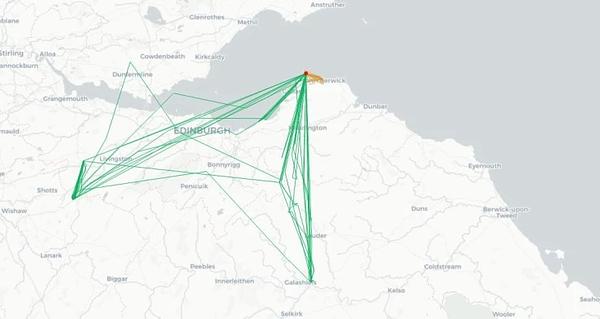_Alex_Dodds_Header_Image_(1).jpg)
What impact could the windfarms in the Firth of Forth have on the breeding seabirds?
Gary Clewley, Research Ecologist from the Wetland & Marine Team for the British Trust for Ornithology, gives an overview of their latest research project tracking the movements of Lesser Black-backed and Herring Gulls breeding in the Firth of Forth.
Renewable energy forms an important part of the efforts to tackle climate change and consequently offshore wind farms have become an increasingly common sight along our coastlines. However, in deciding where new wind farms should be developed, it is important to assess the potential impacts on wildlife. This summer, BTO with support from the Department for Business, Energy and Industrial Strategy (BEIS) and Scottish Natural Heritage (SNH), has started a new project tracking Lesser Black-backed and Herring Gulls breeding in the Firth of Forth to understand their interactions with proposed and operational wind farms both locally and elsewhere during the birds’ annual movements. This work builds on similar tracking studies carried out elsewhere in the UK over recent years and it will be exciting to see what similarities and differences we find from this new study.
_Alex_Dodds_Header_Image.jpg)
Gulls are infamous for their chip-stealing habits, but individuals may use a wide range of habitats in addition to our towns and cities, from farmland to the marine environment. Gulls have been incredibly successful in how they have exploited human landscapes, but with changes offshore, in urban areas, and to landfill sites, exactly how and where we interact with gulls is also undoubtedly going to change in the next few years. Tracking allows us a unique insight of birds’ movements, both through the day and across seasons. The gulls tagged in the Firth of Forth this year have been fitted with the latest GPS tags, including devices which utilise the mobile phone network to send data directly back anywhere in the world with phone signal (and, yes, we have thought about the roaming charges!) so we can track their movements year-round in near real-time. We expect to continue to collect data for several years, after which time the tag will safely drop off the bird. We can thus understand what is happening not just during a brief snapshot, but across seasons and between years.

It is already clear from the tracking work that different birds are their own individuals. Two Herring Gulls breeding just metres apart on Fidra have opted for quite different foraging approaches. One has been travelling up to 60 miles each trip to visit a choice landfill site, whereas another has scarcely explored further than the local harbour at North Berwick. It remains to be seen what these individuals will do after the breeding season: our previous studies have shown that Lesser Black-backed Gulls can winter anywhere between northern UK and Senegal.
We are grateful to the Dalrymple family, RSPB and SNH for access and permission to carry out this tracking work, and to BEIS and Hartley Anderson for their support, and look forward to sharing more details about the project soon.
Gary Clewley Research Ecologist – Wetland & Marine Team British Trust for Ornithology
